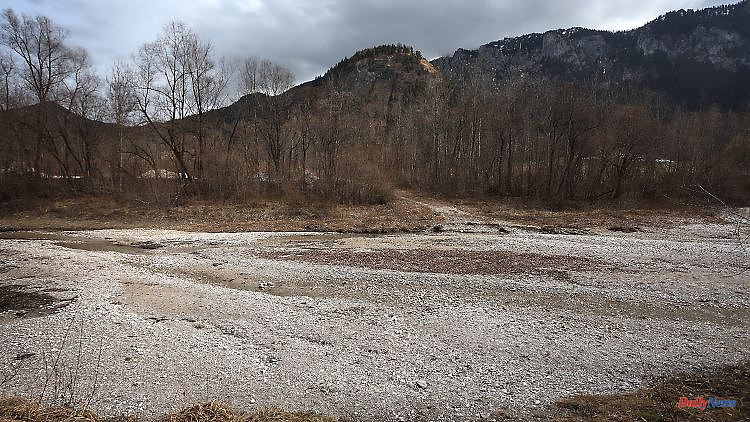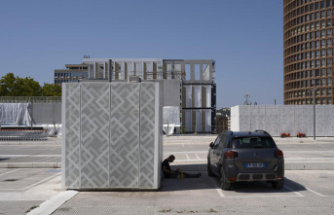Droughts seem to be more a part of summer. However, little snow and a lack of rain are already making many areas around the Alps exceptionally dry regions. Farmers fear the worst for the upcoming season.
In view of the often low snow cover in the Alps and the lack of rain in February, according to experts, massive drought is imminent. In France, Switzerland, Italy and parts of Austria there is currently much less snow than usual for many years, said meteorologist Klaus Haslinger from Geosphere Austria.
In Italy, the environmental organization Legambiente is sounding the alarm and warning that 53 percent less snow has fallen in the Alps there in recent months than the long-term average. The problem is not only the lack of snow, but also the lack of rain. In the Po basin, Italy's largest river, rainfall has fallen by 61 percent. In France, after several weeks of practically no rain, a second drought summer in a row is already being feared.
Blocking high pressure areas over western Europe, which push rain fronts away, are responsible for the low precipitation. It is not the first time that such weather conditions have resulted in extremely dry years, said Haslinger. Even 60 years ago it had rained very little for years because of a certain temperature distribution over land and sea. "At that time the level of the Danube fell to a record low," said the meteorologist. There is evidence that global warming could favor these temperature patterns.
"If the spring weather is similar to 2022, the drought will become much worse," warns the agricultural meteorologist at the University of Natural Resources and Life Sciences in Vienna, Josef Eitzinger. It is becoming apparent that the rivers will transport much less meltwater. "This means that the spring spray, which would also be important for replenishing groundwater, is missing." In France, according to current data from the national water monitoring system, out of 422 groundwater areas observed, 125 are already at a very low level, 120 at a low level and 97 at a moderately low level.
The lack of water is also affecting Venice. Many gondolas lie in the mud. Because of the low water level, the smaller canals are no longer navigable. At low tide, a water level of more than 65 centimeters below the normal level was last measured. All of northern Italy is suffering from prolonged drought. According to the newspaper La Repubblica, after February without rain in Italy's "Food Valley", there is a risk of a 40 percent drop in national food production. No one can remember a worse drought there.
According to press reports, Lake Maggiore is only 38 percent full, and Lake Como is no better. But the drought is also making itself felt further south in Italy. The capital's newspaper "Il Messaggero" reported that the water level on the Tiber in Rome had already dropped by 1.50 meters.
"Today's snow deficit is the drought next summer and autumn," said Manuela Brunner, Head of Hydrology and Climate Impacts in Mountain Regions at the WSL Institute for Snow and Avalanche Research SLF in Davos. The effects have increased significantly over the decades. In a study she found that the number of droughts caused by snow melt deficits was 15 percent higher in the period 1994 to 2017 than in the years 1970 to 1993. She assumes that the trend will continue because the rise in the snow line. This reduces the amount of water reserves stored in the snow.
Because of record low levels in groundwater south of Vienna, many farmers would have to adjust to restrictions on irrigation of the fields, says Eitzinger. The level of the ecologically particularly valuable Lake Neusiedl on the border with Hungary - it is mainly fed by rainwater - is lower than ever.












